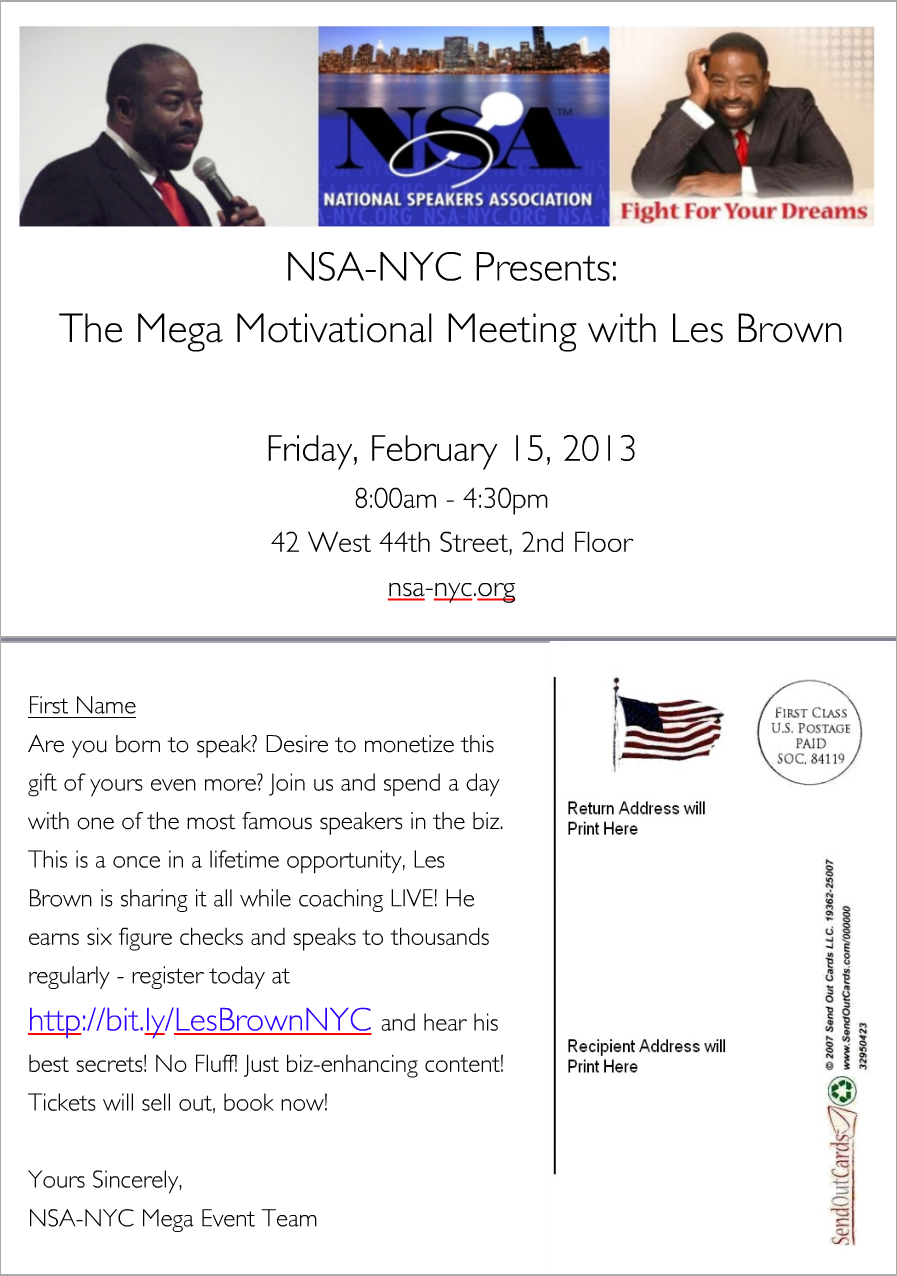 I read an interesting story written by Deborah Grayson Riegel, who was giving a presentation at the Bronx zoo. In addition to her human audience, there were 20 monkeys outside with their faces pressed against the window, watching her presentation. Each time she advanced her PowerPoint slide, the monkeys would bang their fists against the window. Eventually, she had to let go of her PowerPoint presentation, and stopped changing the slides altogether.
Most of us are not going to be speaking at the zoo, but we will have our own monkeys to deal with - the usual cast of characters known as a difficult audience - hecklers, people causing distractions, zoning out, and generally interrupting your presentation. It's important to be flexible and work with your audience.
I read an interesting story written by Deborah Grayson Riegel, who was giving a presentation at the Bronx zoo. In addition to her human audience, there were 20 monkeys outside with their faces pressed against the window, watching her presentation. Each time she advanced her PowerPoint slide, the monkeys would bang their fists against the window. Eventually, she had to let go of her PowerPoint presentation, and stopped changing the slides altogether.
Most of us are not going to be speaking at the zoo, but we will have our own monkeys to deal with - the usual cast of characters known as a difficult audience - hecklers, people causing distractions, zoning out, and generally interrupting your presentation. It's important to be flexible and work with your audience.
Speaking of monkeys... someone recently threw a monkey wrench into my half day presentation training workshop, which was scheduled from 1:00 - 4:00pm. We were told that four of the participants had to leave by 2:30. The program was designed to build speaking skills so the speakers would be prepared to give their final presentations at the end of the workshop. We had to do a quick redesign on the spot - in 5 minutes. My partner and I huddled and came up with a plan. The goal was to give each participant the opportunity to present, leave on time, and still gain enough learning to succeed in their next presentation. It worked.
In public speaking, as in life, we always need a backup plan. Deborah had no choice - the monkeys forced her to stop using PowerPoint. Your audience may be more subtle, but good public speakers pick up the nuances and can change in a moment to better serve their listeners. Technology will fail. And an audience can quickly tune out. We need to be able to go where the current is taking us. That's the mark of a professional speaker.

 Vernice Armour
Vernice Armour I recently read an article by Dylan Kendall entitled, "
I recently read an article by Dylan Kendall entitled, " Professional speakers who are satisfied with the status quo will surely find their audience slipping away. Just like the car replaced the horse and buggy, dynamic, interactive presentations are replacing the talking head. Today, public speakers have to play a bigger game in order to give a
Professional speakers who are satisfied with the status quo will surely find their audience slipping away. Just like the car replaced the horse and buggy, dynamic, interactive presentations are replacing the talking head. Today, public speakers have to play a bigger game in order to give a 
 Back in September, I wrote about
Back in September, I wrote about  When I first started out in my speaking business, I was hired by American Management Association to give public seminars in public speaking and presentation skills.
One day, the program director sent around a memo stating that all AMA presenters were expected to arrive early to the class. It was not acceptable to show up at 9:00 a.m. What? Who would do that? I always arrived an hour early.
When I first started out in my speaking business, I was hired by American Management Association to give public seminars in public speaking and presentation skills.
One day, the program director sent around a memo stating that all AMA presenters were expected to arrive early to the class. It was not acceptable to show up at 9:00 a.m. What? Who would do that? I always arrived an hour early.
 On Friday, Ford Saeks spoke to the
On Friday, Ford Saeks spoke to the  Today marks the eleven year anniversary of 911. I remember it like yesterday. It was the nicest day of the year. There was a noticeable stillness in the air. I headed off to
Today marks the eleven year anniversary of 911. I remember it like yesterday. It was the nicest day of the year. There was a noticeable stillness in the air. I headed off to  A couple of years ago I spoke to an organization of business owners. Their policy was that you had to give two free three hour presentations before you could have the honor of being paid to speak. It didn't matter if you had 20 years experience,
A couple of years ago I spoke to an organization of business owners. Their policy was that you had to give two free three hour presentations before you could have the honor of being paid to speak. It didn't matter if you had 20 years experience,